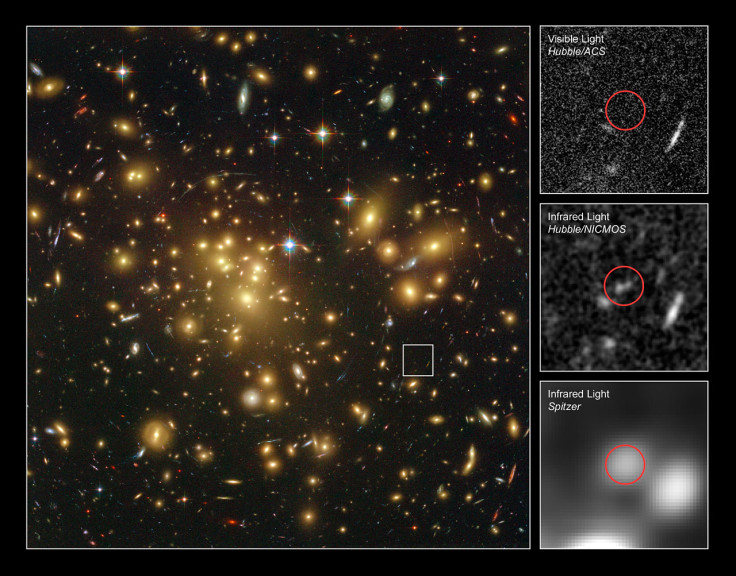Mysterious dusty galaxy from dawn of the universe sheds light on cosmic Dark Ages

A galaxy from the dawn of the universe has been found to contain cosmic dust – millions if not billions of years before it was supposed to.
The galaxy A1689-zD1 was first discovered by astronomers in 2008 and at the time it was the most distant and youngest ever to be found.
Researchers at the Niels Bohr Institute have now found that the galaxy, at just 700 million years old, contained dust particles – a characteristic thought only to be seen in galaxies far older and that suggests early galaxies were quickly filled with elements like carbon and oxygen.
Published in the journal Nature, the researchers note that cosmic dust comes from the nuclear combustion process in stars. It is driven out into space when a star dies and explodes.
However, because lower mass stars like our Sun have lifespans of billions of years, the age of the galaxy has thrown up questions about how one so young could have so much dust.
To produce heavy elements found in cosmic dust, stars have to die. The process has to be repeated for a number of stellar generations to produce a significant abundance of heavier elements like carbon, oxygen and nitrogen.
Darach Watson, an astrophysicist with the Dark Cosmology Centre said: "It is the first time dust has been discovered in one of the most distant galaxies ever observed - only 700 million years after the Big Bang. It is a galaxy of modest size and yet it is already full of dust. This is very surprising and it tells us that ordinary galaxies were enriched with heavier elements far faster than expected."

Speaking to IBTimes UK, he added: "The more massive a star, the shorter its life. This is very extreme. There are stars with lifespans of about 10 billion years. A star 10 times more massive will have a much shorter lifespan – a few hundred times shorter. They eat their fuel much faster.
"This galaxy, which formed 700 million years after Big Bang, this is not long enough for low mass stars to have formed, lived and died." He said the finding "kills" the idea that low mass stars could have formed this galaxy.
The galaxy was discovered through a process called gravitational lensing. Astronomers used the light of a large cluster of galaxies known as Abell 1689 to magnify the distant A1689-zD1.
Researchers then studied the galaxy with the Alma telescope in Chile in order to observe the far-infrared wavelengths – their findings showed the galaxy was full of dust. "It is very surprising and it is the first time that dust has been found in such an early galaxy," Watson said. "The process of star formation must therefore have started very early in the history of the universe and be associated with the formation of dust.
"The detection of large amounts of solid material shows that the galaxy was enriched very early with solids which are a prerequisite for the formation of complex molecules and planets."
Discussing where the dust came from, he added: "Although the exact origin of galactic dust remains obscure, our findings indicate that its production occurs very rapidly, within only 500 million years of the beginning of star formation in the Universe -- a very short cosmological time frame, given that most stars live for billions of years."
© Copyright IBTimes 2025. All rights reserved.






















